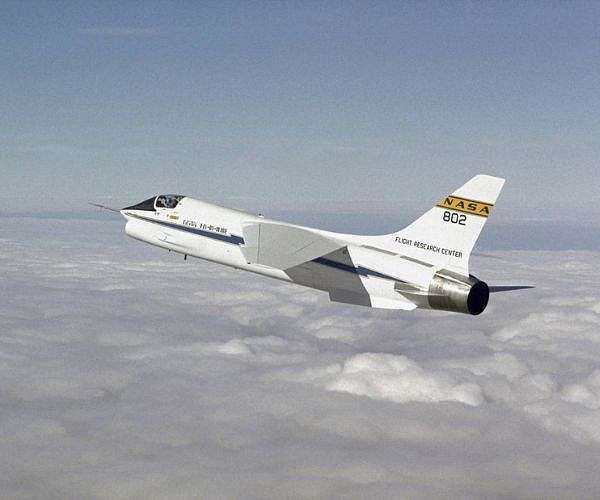19.06.2023

The F-8C Digital Fly-By-Wire aircraft is currently on display at NASA Armstrong.
One of NASA Armstrong Flight Research Center's greatest contributions to commercial aviation is something that passengers never see - digital fly-by-wire flight controls.
Digital fly-by-wire technology replaces the heavy pushrods, cables, and pulleys previously used to move control surfaces on an aircraft's wings and tail. The technology uses a computer to send pilot commands by fiber optic wire to actuators that move control surfaces. Compared to a mechanical control system, fly-by-wire is smaller, lighter, offers improved performance, and is more responsive to pilot inputs.
With digital fly-by-wire there are fewer parts to break or malfunction. The system is easier to install than mechanical linkages, thus lowering manufacturing and maintenance costs. Space and weight once given to mechanical linkages can be used to carry more passengers and cargo, to increase fuel capacity, and give the aircraft greater range.
Designers also benefit from computerized flight controls which make dozens of subtle adjustments a second, keeping an airplane on its intended flight path, and allowing for designs that otherwise would be aerodynamically unstable.
NASA's first fly-by-wire aircraft was the Lunar Landing Research Vehicle, a vertical take-off and landing aircraft used to determine piloting techniques for flying and landing on the Moon. The LLRV was tested at what was then known as the NASA Flight Research Center, now NASA Armstrong. An improved version of that aircraft, the Lunar Landing Training Vehicle, was flown by Apollo astronauts at NASA's Johnson Space Center in Houston, Texas.
Shortly after the historic 1969 Moon landing, NASA approved a plan to develop and test a digital-fly-by-wire system for aircraft, using the digital Apollo computer and inertial sensing as its core. The first flight occurred on May 25, 1972, piloted by Gary Krier.
"Everyone on the program knew that what we were doing was going to be a major breakthrough in flight control," said Krier, who later became Dryden's associate director of operations before retiring in 2008. "We were excited to be assigned to the program and make our mark on aviation by being first in digital controls. The enthusiasm was there every day."
In a joint program with the Langley Research Center at Langley, Virginia, the original Apollo system was replaced with a triple redundant digital system. It would provide backup computer capabilities if a failure occurred. NASA's DFBW program, consisting of 210 flights, lasted 13 years.
This technology, which helped put Neil Armstrong on the Moon, now regularly helps take people on vacations, business travel, and trips to see family. It's also used in new military fighters and bombers. The first commercial airliner to fly with DFBW was the Airbus 320 in 1987, followed by Boeing's 777 in 1994. Today, the technology is included in new aircraft from both manufacturers.
NASA's X-59 quiet supersonic experimental aircraft will be using a DFBW system. The X-59, under construction by Lockheed Martin in Palmdale, California, is a key part of an effort to enable supersonic flight over land, something banned for five decades because of noise and potential damage from sonic booms.
The F-8C Digital Fly-By-Wire aircraft is currently on display at NASA Armstrong.
Quelle: SD

